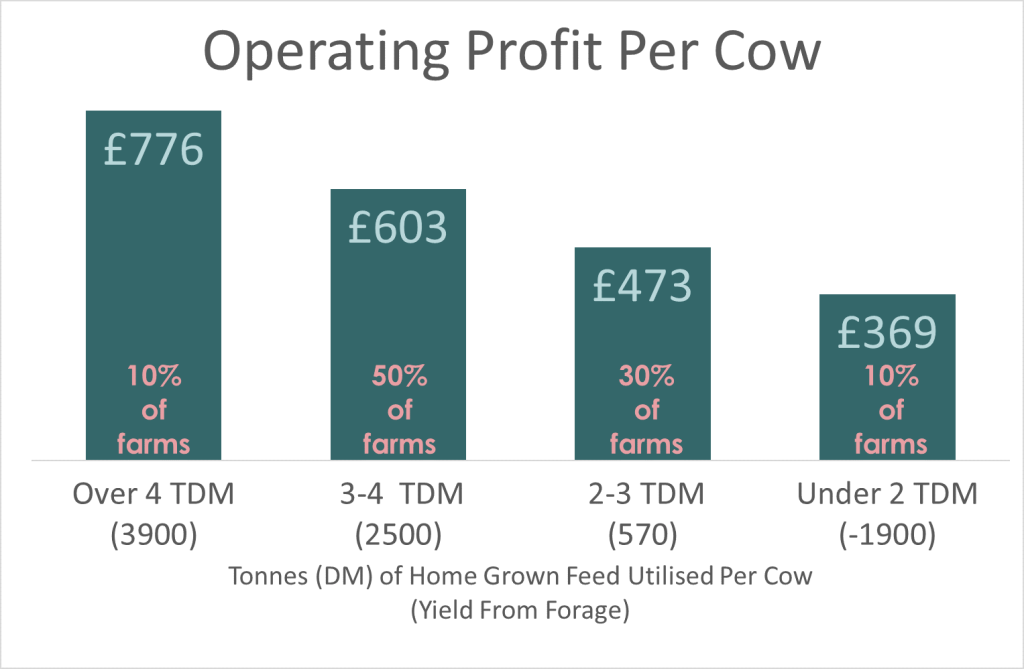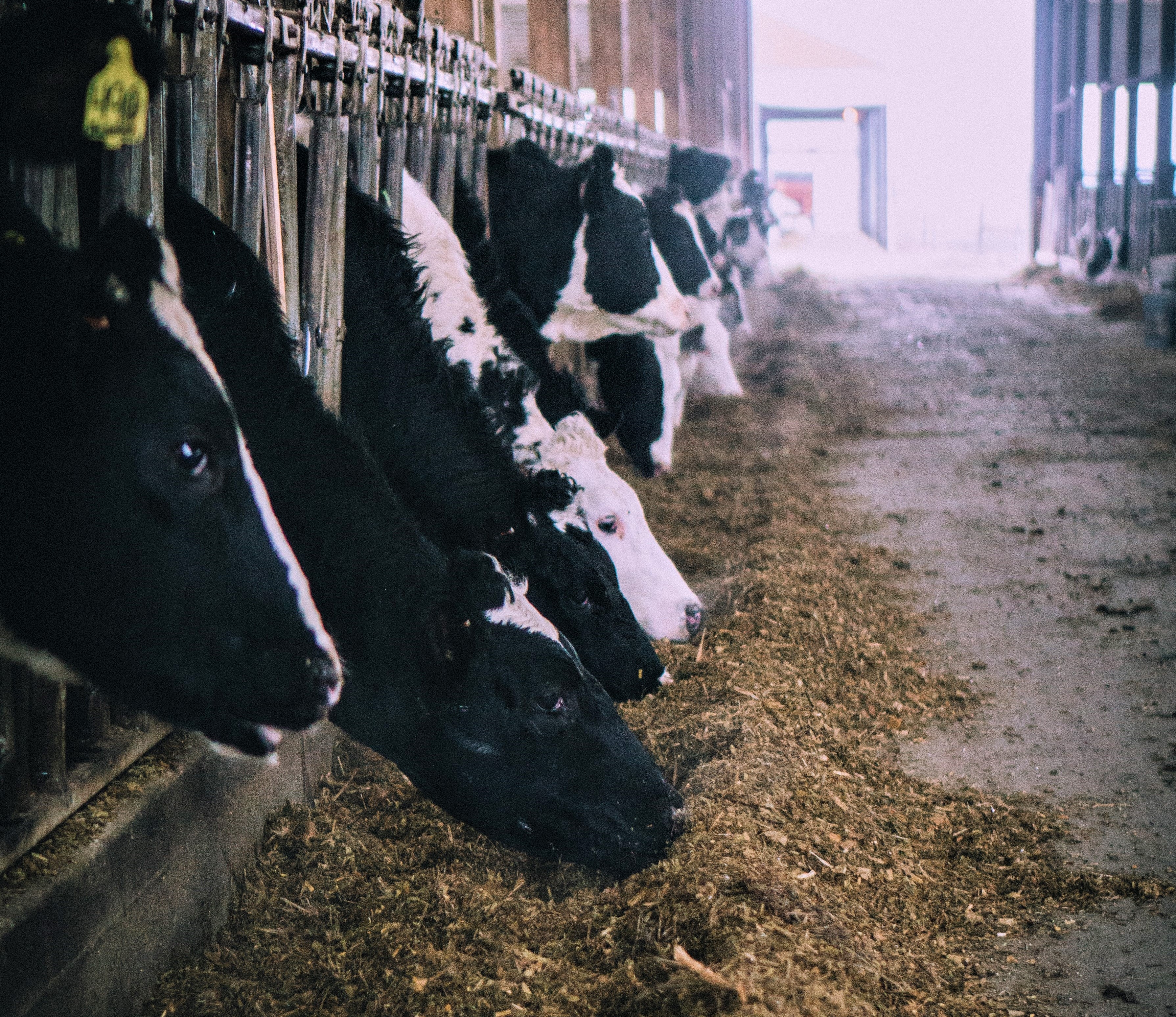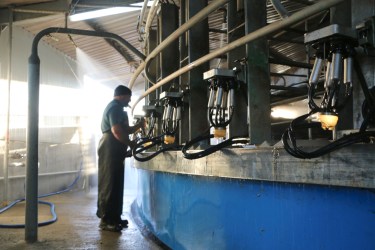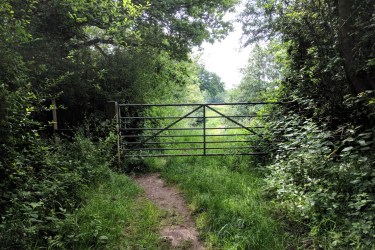By Sue Bryan
Feeding practices have a huge impact on herd health and performance, so the importance of delivering a consistent feeding programme is paramount to profitability. One key resource to consider is that of homegrown forage, with milk from this resource widely heralded as a key driver of cost-effectiveness and productivity.
However, better performance from forage doesn’t happen by chance, it requires measurement, planning and precision. Whatever the season throws at them, it is the good farmers who consistently produce more from forage and, in turn, generate better profits.
The benefits of feeding forage
There is no denying that milk from forage is the cheapest you can produce and that there is a link between operating profit and forage use. Look at figure 1, when the operating profit per cow is analysed by the tonnes of dry matter of forage utilised per cow, it shows the top 10% of farms achieve more than twice the operating profit per cow of the bottom 10%.
When we compare the top 10% with the average, we see a difference in operating profit of £173 per cow. The bottom 10% achieve only half the profit of the top farms. Whatever way you look at, improving forage utilisation drives profit.

Source: Promar Farm Business Accounts 2018
Despite these figures, we are still facing a huge problem when it comes to farmers properly monitoring forage production and utilisation. Diets are being fine-tuned with all manner of ingredients and additives, as if this is the key to unlock more profit. Yet time and time again it is only by treating forage with the same precision, and having a clear goal to drive high performance from it, that profit potential can be maximised.
There is evidence that the two main factors bearing on farm profitability are the level of forage utilisation per animal and the amount you are utilising per hectare. If you aren’t measuring these factors, you are driving blind.
To combat this, and increase production and profitability, a precision-based mindset is required across three areas.
Optimising the productive potential of land
The first improvement opportunity is production; are you aware of the production potential from your block of land? This is reliant upon knowing what your individual crops and fields are producing. With this knowledge, you can set out to improve forage productivity, growth and profits, and avoid possible expensive, unnecessary rented land.
Knowing on a field by field basis what it costs to grow each tonne of forage produced is arguably far more important than knowing how much milk an individual cow gives. Most farmers have data galore on animal production, but few have precise information on forage. As technology improves this glaring oversight in information has to be addressed.
Another point to consider is whether you are maximising the crop output per hectare. This has to start with soil, where waterlogging, compaction, poaching and poor moisture retention can all reduce crop potential. Then nutrient balance, both macro and micro need to be assessed along with soil pH, as crop productivity will be driven by nutrient availability.
It is also important to consider the quality of the crops grown. Are the best varieties for the farm being used and are diseases, weeds and pests adequately controlled to allow the desired species to flourish?
Worrying about waste
Waste is still a major issue with conserved forages, reducing forage availability and increasing costs of production. Reducing wastage begins in the field with good harvest management, from reducing excessive wilting to avoiding high levels of nitrogen or soil and slurry contamination.
Clamping is another place to avoid shortcuts. They need to be filled quickly and consolidated well before being perfectly sealed and sheeted. By doing so, you can reduce fermentation losses. After all, with poor clamp management, 30% or more of the energy ensiled can easily be lost.
When the clamp is opened, effective face management is essential to reduce aerobic spoilage, so using a block cutter and moving across the face quickly will be essential to reduce these losses.
Drive high forage dry matter intake
Finally, steps need to be taken to improve forage utilisation. This includes harvesting at the right time to ensure a forage with good nutrient content and high digestibility.
Another area which is often overlooked, and where improvements could be made, is allowing the cows to achieve high intakes. All too often cows are overcrowded with inadequate trough space or access to water. Take the time to look at trough access and design to allow cows to eat more forage. It is then a case of looking at the nutrient mix to make sure the diet supplies the nutrients required, and will promote good rumen health.
Planning for the future
The key for success is to start the process of recording and assessing productivity now. This way, areas for improvement can be identified well ahead of next season and decisions can be made about autumn reseeding and possible planting of cereals for wholecrop.
You must have a plan. This needs to contain an estimate of the demand for forage, based on predicting intake and stock numbers at each phase of the housing and grazing cycle. A field by field plan of production is also required to calculate the total level production.
After all, those farmers who adopt a focused, detailed approach to find ways to improve production and utilisation are the ones who’ll make the most of their forage and deliver a profitable, productive feeding programme that’ll last way into the future.
If you’d like more advice on how to make the most of your forage, we’re here to help. Contact the Promar consultancy team for tailored guidance and information.







